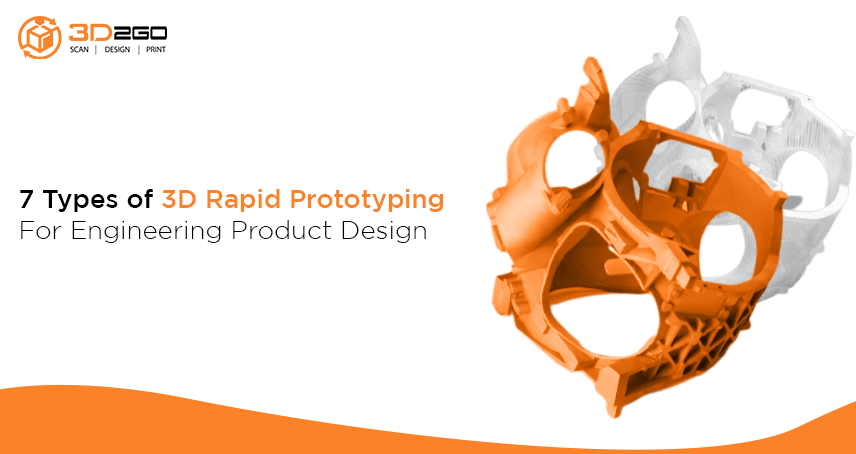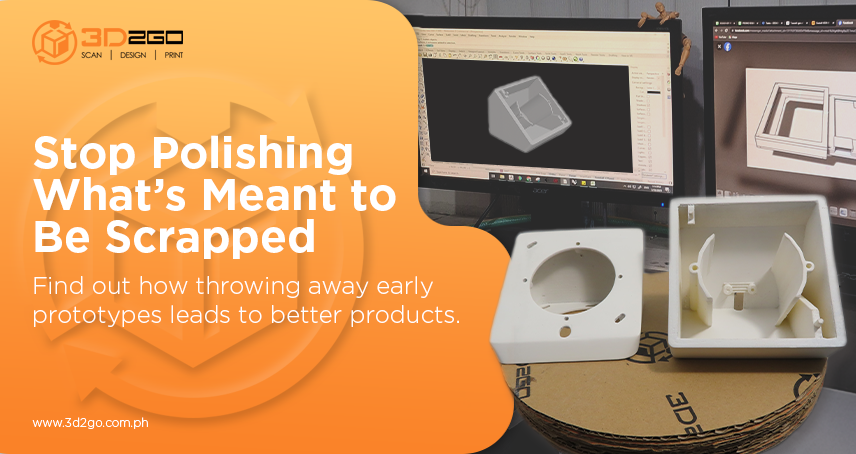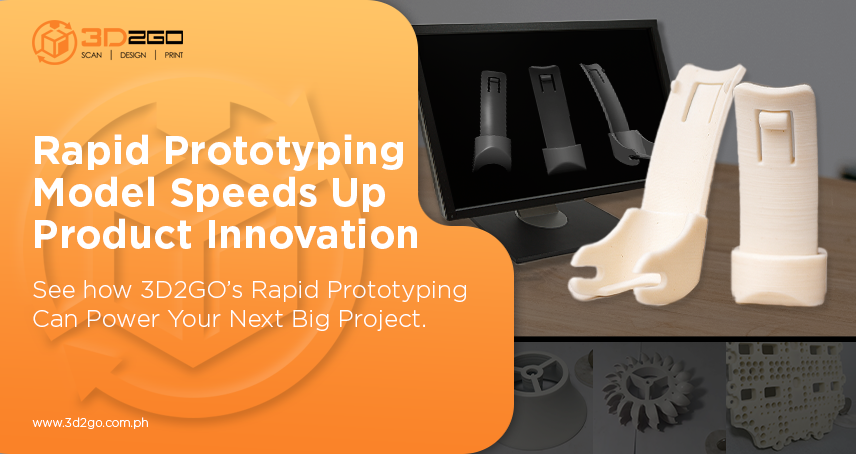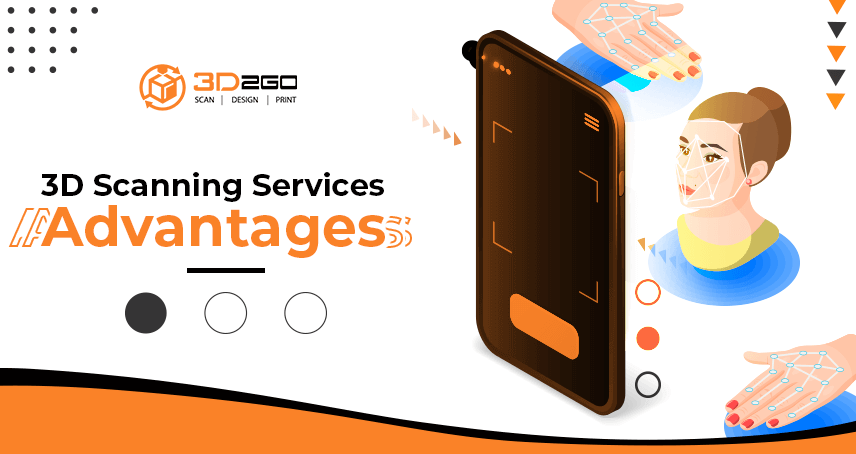
3D Scanning Services Advantages
June 22, 2022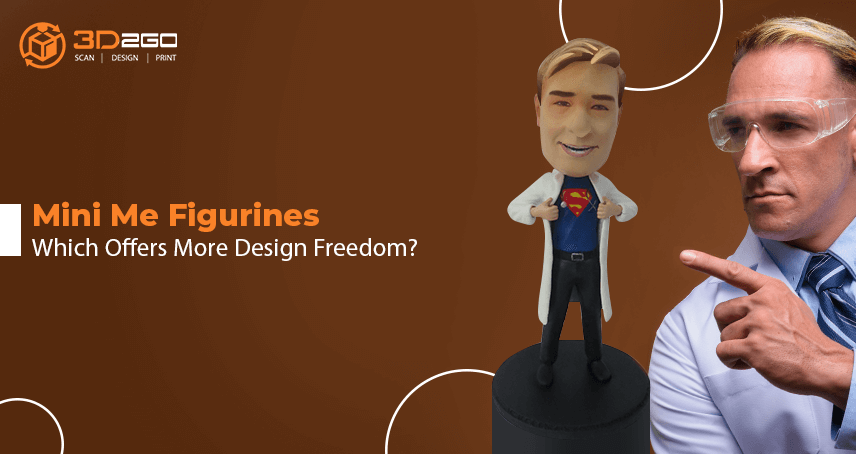
Mini Me Figurines Which Offers More Design Freedom?
June 22, 2022Utilize these seven types of 3D rapid prototyping for engineering product design purposes
The engineering product design takes advantage of 3D rapid prototyping. Time to market is now a key driver for the success of any business. To utilize different types of rapid prototyping enables most businesses to meet the market demand.
In the context of engineering product design, a prototype is the initial version of any product design. This is used for the following purposes:
- Design evaluation
- Test the technology
- Working principle analysis
What is 3D Rapid Prototyping
This means the fabrication of a model or physical part using 3D CAD software. This is made through 3D printing or Additive Manufacturing (AM). Using 3D rapid prototyping, you can create the design that closely matches the concept design.
Two design fidelity you can get from 3D rapid prototyping
| Low-fidelity Prototype | High-fidelity Prototype |
| Simple and quick production of the design meant to test the broader concept.
It is distinguishable as a mere prototype than the final build. |
This output matches the projected end product.
May appear and contain the functions as similar/closer to the final build. |
7 Types of Rapid Prototyping
Here are the most common technologies involved in 3D rapid prototyping. These are often used for engineering product design.
1. Stereolithography (SLA) or Vat Photopolymerization
This is an affordable and fast 3D printing technology and is commercially successful. It prints using UV light to convert photosensitive liquid into solid plastics.
Also it can read almost any 3D CAD software output that is .stl file format. This file format is the default computer language used by modern 3D printers.
SLA is your best choice if you want to create high quality prototypes with complex geometries. It also creates an output that is often strong with smooth finish.
2. Laser Sintering (SLS)
This technique is often used for both metal and plastic prototypes. This involves a laser that heats and sinters the powdered bed to build the prototype, layer by layer.
It’s final product may not be as smooth and sturdy as SLA and may need post-processing work. This may work best for complex geometries such as internal lattice structures.
3. Fused Deposition Modelling (FDM) or Material Jetting
This is an inexpensive and easy-to-use technology. This is often used in non-industrial desktop 3D printers.
This involves melting of thermoplastic filament inside the nozzle and this liquid plastic laid down layer upon layer according to the deposition program. Its final output often has poor resolution and is weak.
Yet this is perfect for product development as it is scalable. Also it creates 3D prototypes that are clean, fast, user-friendly and cheap.
4. Selective Laser Melting (SLM) or Powder Bed Fusion
This is preferred in making complex parts prototypes that are high-strength and durable. This process is often expensive and requires a skilled engineer to do so. Often this is used in demanding applications in aerospace, automotive, defense and medical industries.
Some rapid prototyping’s SLM materials are titanium, aluminum, stainless steels, and cobalt chrome alloys.
5. Laminated Object Manufacturing (LOM) or Sheet Lamination
This is affordable but less sophisticated than SLM or SLS. LOM does not require specially controlled conditions. This involves cutting of thin laminates with laser beams to create the pattern design.
This process also involves layering or stacking process until the desired output is complete.
6. Digital Light Processing (DLP)
This technique uses a more conventional light source than SLA. This cures and uses polymerisation of resins. DLP requires support structures and post-build curing.
This is in general a much faster process and uses lesser photo resin thus cost-saving. Its printed prototypes have excellent dimensional tolerance and surface finish.
7. Binder Jetting
This allows simultaneous printing of many parts at a time but not as strong as what you can get from SLS.
This involves hundreds of nozzles that spray micro-fine droplets to form one layer. Which roller will compact, re-coat with powder and spray again for the next layer. It needs another curing process in an oven to burn off the binding resin and fused the power into a solid part.
Benefits for Businesses of 3D Rapid Prototyping
In order to stay competitive, businesses must develop and launch new products at a much faster pace. Innovations like 3D printing and 3D rapid prototyping enable most businesses to do so.
Through 3D rapid prototyping, you can gain the following benefits:
Faster new product development
Prototyping is a crucial process when you want to launch a new product in a highly competitive market. Using the types of rapid prototyping for your concept design speeds up the overall product development process.
Design and concept validation
Prototypes help you to validate the form, fit, and function of any of your designs. This is possible without spending too much on a mere prototype that you still need to modify and improve.
3D rapid prototyping lets you move beyond visualization and abstract ideas. Thus it would be easier for you to grasp the design and properties of any product.
Product verification
Any concept design has to meet the technical requirement and business objectives before its launch in the market. Prototypes can help you do so as you will have a sample that closely resembles the concept design.
This also allows you to create a roadmap in developing and fine-tuning the product before it hits the market.
Functionality testing
Functionality can make or break any product. A 3D printed prototype is a perfect tool to test the objectives of the concept design. Also to finalize the product specifications.
This also eliminate costly investment on design flaws that you can be aware of during the early assessment of the prototype.
User-experience
A prototype provides the end-user and other stakeholders such as investors, clients, and customers to get a hands-on experience. You will get an opportunity to gain feedback from their very experience. Thus you can make the adjustments or modifications, if necessary, to suit their needs.
3D2GO Philippines Is Your Go-to For 3D Rapid Prototyping Services
As the pioneer of 3D printing in the country, we also provide 3D rapid prototyping for various clients and partners.
We use different types of rapid prototyping that will suit your projects. Thus making the best prototypes for any engineering product design you can think of.
32DGO Philippines takes pride in our ability to provide the best 3D-related services such as 3D scanning, 3D designing, and even 3D reverse engineering.
Contact us today and let us help to turn your concept designs into tangible ones!


